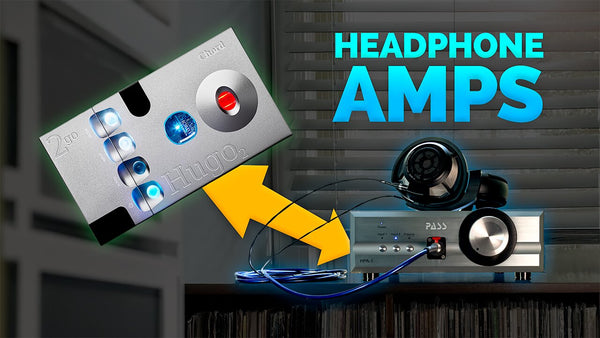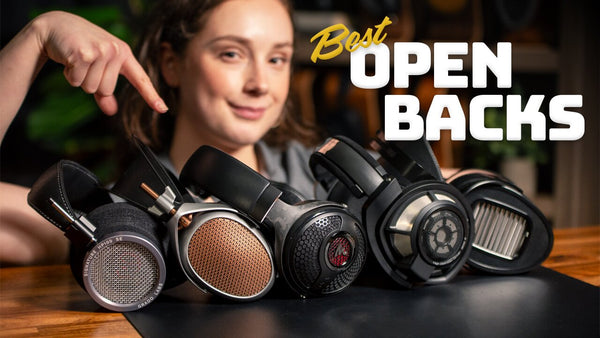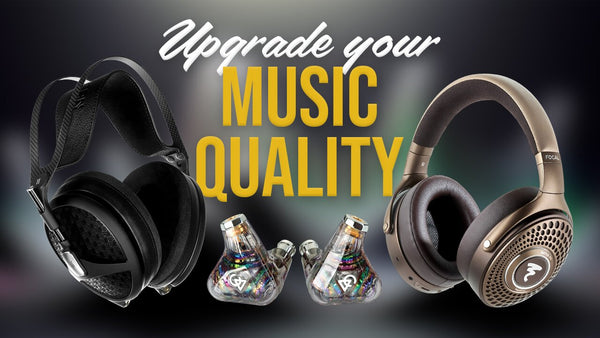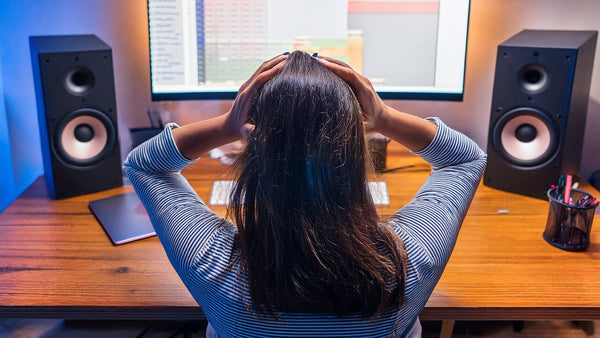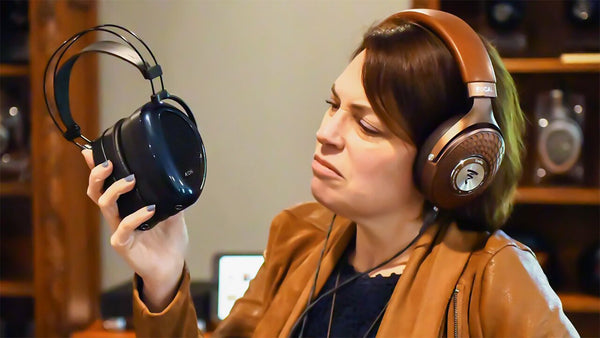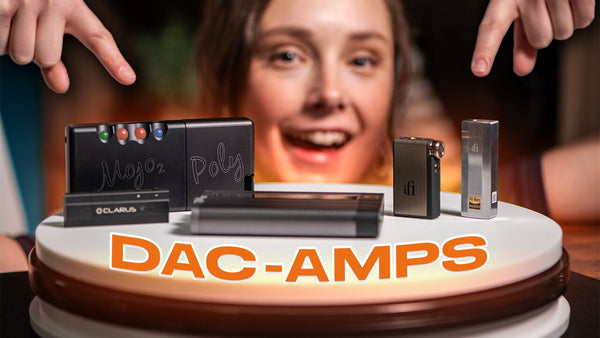The Best Headphones for Mixing and Mastering
Read Time: Approx. 8 min.

Summary: This guide highlights the best headphones for mixing and mastering, offering options across different price ranges. High-quality headphones are crucial for audio engineers aiming for professional sound. The guide covers key characteristics like frequency response, comfort, and soundstage, ensuring you find the perfect pair for your setup.
It’s time to hit the studio and make some new music. You know that the mixing and mastering headphones you use matter. The best headphones for mixing demand a flat frequency response, superior comfort, and incredible imaging. The trick is finding a professional pair at a price point that works for you.
In our guide, we’re sharing the best headphones for studio mixing and mastering at the mid-range and high-end, including what makes them superior. Whether you’re working from a professional studio or home setup, we’ll recommend a quality pair for your lifestyle.
Our selections will help you pick out imperfections and produce an amazing track. Plus, you’ll learn what separates the best mixing headphones from commercial or lower-quality headphones.
A pair of high-end mixing headphones can transform the sound and quality of your tracks. Keep reading to discover the right pair for you.
Why Headphones Matter for Mixing and Mastering
If you’re taking the time to mix and master your tracks, you’re aiming to craft a professional result. Whether it’s a high-octane audio drama or a band’s new single, you want to produce an impressive, clean product. Your mix should be something that consumers would happily pay to enjoy.
Artful mixing has the power to enhance the emotional storytelling of a track. A mix engineer can single-handedly create a moving and memorable audio experience. Meanwhile, mastering ensures cohesion, lending a seamless sense of consistency across an album or long-form audio project. Both feats of engineering are necessary when crafting a mix with the power to stand the test of time.
If you hope to attract sponsors or labels for an audio project, quality is even more crucial. Brands are more likely to associate themselves with crystal clear, imperfection-free audio. After all, why would a brand invest in your project if you don’t invest in it first?
The bottom line? Every imperfection or inconsistency in your audio lowers the perceived value and professionalism of your work.
The difference between amateur mixing and mastering and professional studio work is high-quality audio equipment. That begins with your headphones. The best studio headphones for mixing and mastering are key to reaching the next level in audio engineering.
Here are a few reasons why.
Precision and Accuracy
A moving track has depth and dimension, allowing the listener to track individual instruments on their auditory journey. Often, the goal is to make music sound like the artists are in the room with the listener.
If that’s your goal, the accuracy of your audio matters.
One of the biggest mistakes that accuracy-focused engineers make is choosing low-quality headphones. The result is nearly always a flat, narrow mix, often due to a lack of low-end response. You need to hear all the details to work with them, and you just can’t do that with subpar equipment.
An engineer who cares about fine details uses their mixing headphones to zoom in and out to achieve precision. The dynamic range of a track is almost always more apparent on quality headphones.
Versatility
The acoustics of the room play a huge role in the mixing and mastering process. However, the most important feature in any room is an experienced, creative, and talented engineer. With a quality, honest pair of headphones, a true professional can transcend the limitations of their physical space and achieve their goals anywhere.
The best headphones for mixing and mastering provide consistency no matter where you’re working. After all, great headphones should help you assess the stereo image in any environment. If they’re both clear and consistent, you can achieve honest sound, even in a subpar location. If you invest in great headphones once, you can save money on studio fees for years.
Key Characteristics of the Best Mixing and Mastering Headphones
The truth is that no single pair of headphones for mixing and mastering is ideal for every engineer. Everyone brings a different set of preferences and priorities to the process. Some engineers rely on headphones exclusively during the mixing process. Others use them as an occasional tool.
In most cases, headphones are one weapon in an audio mixer’s complex arsenal. They help engineers get a 360-degree picture of the listening experience. For those focused on the accuracy and versatility of headphones, a few qualities set the best pairs apart.
Frequency Response
The best headphones for mixing and mastering will feature a flat and neutral frequency response. As discussed, this is part of achieving accuracy. Frequency response is key to producing music that sounds the way it originally sounded in the studio.
Lower-quality headphones can add too much brightness during playback. That quality can distort music and make it sound overproduced and artificial.
Great mixing headphones ensure you can hear the mid-range accurately. They help you manage the low-end and keep brighter audio from sounding shrill. The best pairs should provide a good response and eliminate variation.
Soundstage and Imaging
Achieving accurate soundstage and audio imaging can be tricky on headphones.
On inexpensive headphones, if you push sound to the left, it will exclusively come through on the left side. Compare that to listening on speakers. While the sound might come through stronger on the left, your right ear will hear it, too. Which version is more accurate depends on the engineer’s personal preference.
The best headphones for studio mixing and mastering offer a compromise, helping you achieve that “in-the-room” feel. You can achieve a distinct separation of each instrument, vocalist, or note.
Comfort for Long Sessions
The average audio engineer can’t wear a low-quality pair of headphones for more than 30 minutes. After that, fatigue starts setting in.
The truth is, great engineering takes time. You need a pair of phones with a lightweight design, adjustable headbands, and plush ear pads for extended use. Comfort prevents you from stopping and starting, helping you maintain focus so you can tweak a track to perfection.

Build Quality
If you’re going to invest in the best headphones for mixing and mastering, you want them to last for a long time. That’s why build quality matters. The more durable the construction, the longer your headphones will last.
Likewise, you might prioritize a pair with replaceable parts. That is often easier when you choose a pair from a major, reputable audio brand. It’s much less expensive to repair headphones after extensive use than to replace them wholesale.
And, as audiophiles know, replacing a pair of great headphones is like amputating and replacing a limb. You might as well be starting from scratch. Choose a quality pair from the start and they’ll be with you for years to come.
Closed-Back vs. Open-Back Headphones vs IEMs: Which is Better?
Every style of headphones has its own advantages and disadvantages. Closed-back headphones might be best if you can only buy one pair of headphones. They are versatile and allow for minimal sound leakage. They might be more ideal for recording than for mixing, depending on what you value.
However, open-back headphones are the ideal pick for detailed mixing and critical mastering work. Their depth and quality tend to be preferred by most audio engineers and audiophile hobbyists. However, they lack the noise isolation provided by closed-back headphones. They may be harder to use on the go, so live recording engineers might struggle.
For the ultimate mixing and mastering experience, there’s a third contender. IEMs, or in-ear monitors, provide the best of both worlds. They offer versatility, portability, depth, and detail.
In essence, IEMS offer the strengths of open-back headphones in any sound environment. Because of their tight (or even custom) seal, leakage is never a problem.
Consider custom IEMs the gold standard for mixing and mastering. However, both monitors and phones can help you make adjustments that ensure tracks play back with fidelity on all speakers.
We’ll provide a brief overview of the advantages and disadvantages of each style below.
Closed-Back Headphones
- Advantages: Superior sound isolation, ideal for recording and noisy environments.
- Disadvantages: Limited soundstage, potential for bass buildup.
- Best Uses: Tracking and situations where external noise control is essential.
- Moon Audio Review: Best Closed-Back Audiophile Headphones

Open-Back Headphones:
- Advantages: Natural and spacious sound, better for critical listening and mixing.
- Disadvantages: Less isolation, sound leakage.
- Best Uses: Detailed mixing and mastering in quiet environments.
- Moon Audio Review: Best Open-Back Audiophile Headphones

IEMs
- Advantages: Superior sound isolation, compact and portable, external noise reduction, and precise detail in mid and high-ranges.
- Disadvantages: Smaller drivers may cause a reduced soundstage, less accurate low-end reproduction.
- Best Uses: Live sound monitoring, mobile mixing and mastering, and use in noise-sensitive environments.

Top Headphone Recommendations Across Different Price Ranges
As we’ve made clear, professional-quality audio demands professional-quality equipment. We don’t advise you to spend money on mixing headphones or IEMs below the mid-range. The features audiophiles and engineers need simply don’t exist in budget headphones.
We’re sharing our picks for the best headphones for studio mixing and mastering across two price ranges below.
Mid-Range Options
Compared to budget headphones, mid-range headphones come with enhanced features like improved soundstage, comfort, and clarity. They are ideal for student engineers and audiophile hobbyists.
Grado RS1x Headphones
At $750, these are the most affordable mid-range mixing headphones out there. Featuring three different wood species, the RS1x headphones offer warm and embracing tonal abilities you won’t find elsewhere. The signature sound is full-bodied, dynamic, and truly defined.
Audeze LCD-X Headphones
Coming in at $1,199, the LCD-X headphones are at the high-end of the mid-range. They’re perfect for a student in transition. These open-backed beauties are accurate and precise with natural soundstage and excellent spatial positioning.
The LCD-Xs are the most neutral option in Audeze’s LCD collection. That makes them the perfect choice for studio mixing and mastering.
High-End Options
Compared to mid-range headphones, high-end headphones are ideal for meeting exacting industry standards. These models possess superior sound quality and build for professionals. If you’re a working engineer or professional producer, prioritize the mixing headphones on this list.
Audeze LCD-XC Closed Headphones
Priced at $1,299, the LCD-XC closed headphones are an upgrade from the LCD-X. Just as precise, this open-backed alternative offers noise blocking and prevents microphone bleed during recording. The audio fidelity is great for use in noisier or non-studio environments. That makes them exceptionally versatile for remote work or travel.
Sennheiser HD 800 S Headphones
At $1,599.95, you’ll experience a major quality difference when you upgrade to the HD 800 S headphones from Sennheiser. Considered a modern classic, these provide a natural, neutral sound that makes mixing an intuitive breeze.
The HD 800 S headphones are well-constructed and comfortable for extended sessions. Plus, the absorber technology is truly next level.
Fostex TH900mk2 Onyx Black Headphones
The TH900mk2 headphones will run you $1,799, and you’ll get exceptional quality at that price. You’ll experience a wide dynamic range and expansive soundstage.
Detachable connectors are an appealing feature that adds additional compatibility. The sound is accurate, the earpieces are comfortable, and the look is stylish. Audiophiles can’t go wrong.
High-End IEMs
If you need the best of both worlds, a quality pair of IEMs is likely your best bet. Ideal for live recording, mixing on the go, and superior sound isolation, these earphones are the gold standard.
Consider a quality pair of IEMs in addition to mixing headphones. That way, you can ensure you have all the tools you need to achieve an authentic mix.
Sennheiser IE 600 Earphones
At their $599.95 price point, the IE 600 earphones provide incredible value compared to traditional cans. Their neutrality and clear mid-range make them well-suited for mixing and mastering.
You’ll love the balanced and detailed sound. Their portability means you can work anywhere, even in noisy environments.
Sennheiser IE 900 Earphones
For the serious audiophile or professional, the $1,499.95 IE 900s are the upgrade you deserve. Both precision and craftsmanship get an upgrade compared to the IE 600s.
The IE 900s feature superior acoustic tuning and innovative X3R resonator chamber technology. You won’t experience more detailed sound than this.
Empire Ears ESR MKII Universal IEMs
Endorsed by professionals, the $1,099 ESR MKII Universals raise the bar for mixing IEMs. You won’t find a larger soundstage or more impressive resolution.
The audio quality can only be described as pristine. Do you demand a level of surgical precision in your audio detail? These portable, versatile earphones will transform your mixing.
Experience Pristine Mixing with Headphones from Moon Audio
Looking for high-quality headphones for mixing and mastering? Shop our selection of studio-grade headphones designed for precision and clarity. Pair your studio-grade headphones with a Dragon Audio Cable for an enhanced listening experience. Our highly-rated Silver Dragon Premium Headphone Cables deliver the utmost clarity, resolution, and detail you need for mixing and mastering. Hear every guitar pluck, breath inhalation, and more with our Silver Dragon line of Audio Cables.
Related Videos
Best Headphones for Podcast & Video Editors
How to Pick Your Perfect Pair of Headphones
Open vs. Closed Headphones: What's the Difference?

